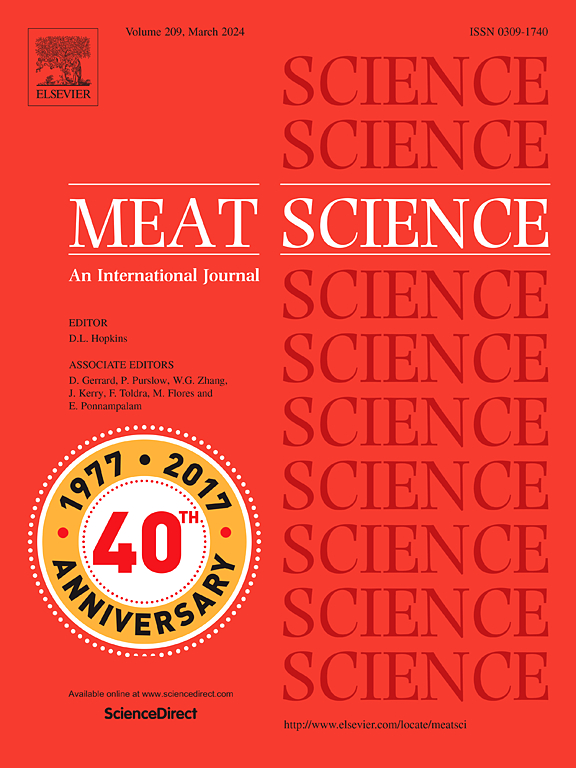Nutritional, environmental and social profiles of natural meat and food derived from cultured muscle cells: An overview
IF 6.1
1区 农林科学
Q1 Agricultural and Biological Sciences
引用次数: 0
Abstract
The increase in global population and changing socioeconomic profile in developing regions has placed growing pressure on global food systems. Livestock are integral to food production but are often perceived as having a negative impact on the environment. This overlooks the positive effects of livestock including benefits for soil carbon, nutrient cycling, and ecosystem services which are relevant for smallholder farmers and large production systems. The major global initiative that incorporates livestock in agroecology, partly under the umbrella of One Health, is changing the perception of livestock in ethical and sustainable food systems. One Health has the core principles of healthy animals, healthy ecosystems, and healthy people. In terms of health, natural meat is a nutrient-dense, nutritious food that contains all nine essential amino acids, the six conditionally essential amino acids, plus key minerals and vitamins. Notwithstanding the changing role of livestock in landscapes, negative perceptions created the opportunity for the emergence of the cultured (laboratory-grown) muscle cell (CMC) industry. The latter makes claims of minimal impact on the environment and a significant reduction in livestock in food systems, which is promoted as animal welfare. The production and composition of CMC food is protected under intellectual property law and proprietary licenses. This makes it difficult to assess the potential environmental and health outcomes of consuming CMC food. In this article we take a fresh look at the nutritional, environmental and social profiles of natural meat and food products derived from CMC.
从培养肌肉细胞中提取的天然肉类和食品的营养、环境和社会概况:综述
全球人口的增加和发展中地区社会经济状况的变化给全球粮食系统带来了越来越大的压力。牲畜是粮食生产不可或缺的组成部分,但往往被认为对环境有负面影响。这忽视了畜牧业的积极影响,包括对土壤碳、养分循环和生态系统服务的益处,这些都与小农和大型生产系统有关。将牲畜纳入生态农业的重大全球倡议(部分在“同一个健康”的保护下)正在改变人们对牲畜在道德和可持续粮食系统中的看法。“同一个健康”的核心原则是健康的动物、健康的生态系统和健康的人。就健康而言,天然肉类是一种营养丰富的食物,含有所有九种必需氨基酸,六种条件必需氨基酸,以及关键矿物质和维生素。尽管牲畜在景观中的作用不断变化,但负面看法为培养(实验室培养)肌肉细胞(CMC)产业的出现创造了机会。后者声称对环境的影响最小,并大大减少粮食系统中的牲畜数量,这被宣传为动物福利。CMC食品的生产和组成受知识产权法和专有许可证的保护。这使得很难评估食用CMC食品的潜在环境和健康后果。在这篇文章中,我们将从营养、环境和社会方面重新审视天然肉类和源自CMC的食品。
本文章由计算机程序翻译,如有差异,请以英文原文为准。
求助全文
约1分钟内获得全文
求助全文
来源期刊

Meat Science
工程技术-食品科技
CiteScore
12.60
自引率
9.90%
发文量
282
审稿时长
60 days
期刊介绍:
The aim of Meat Science is to serve as a suitable platform for the dissemination of interdisciplinary and international knowledge on all factors influencing the properties of meat. While the journal primarily focuses on the flesh of mammals, contributions related to poultry will be considered if they enhance the overall understanding of the relationship between muscle nature and meat quality post mortem. Additionally, papers on large birds (e.g., emus, ostriches) as well as wild-captured mammals and crocodiles will be welcomed.
 求助内容:
求助内容: 应助结果提醒方式:
应助结果提醒方式:


